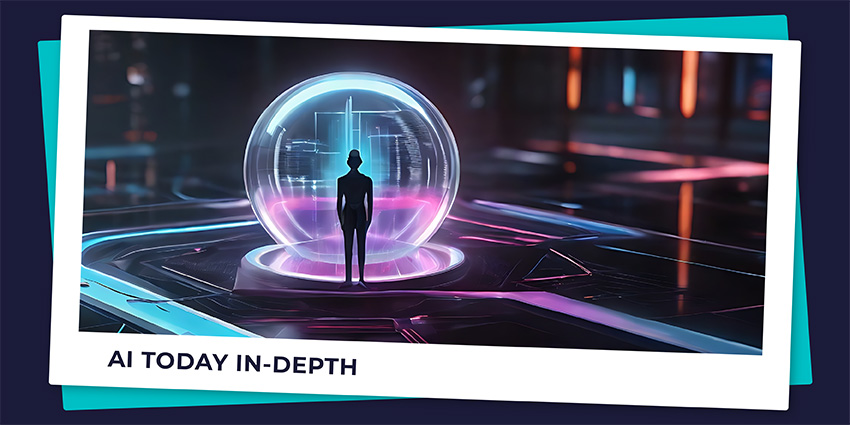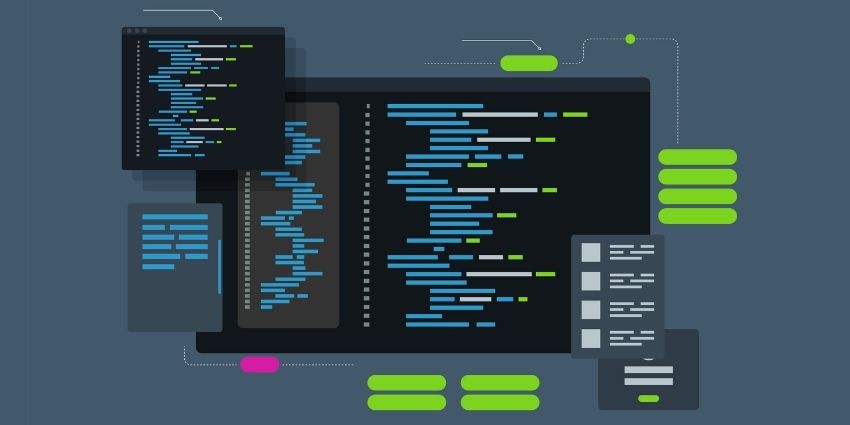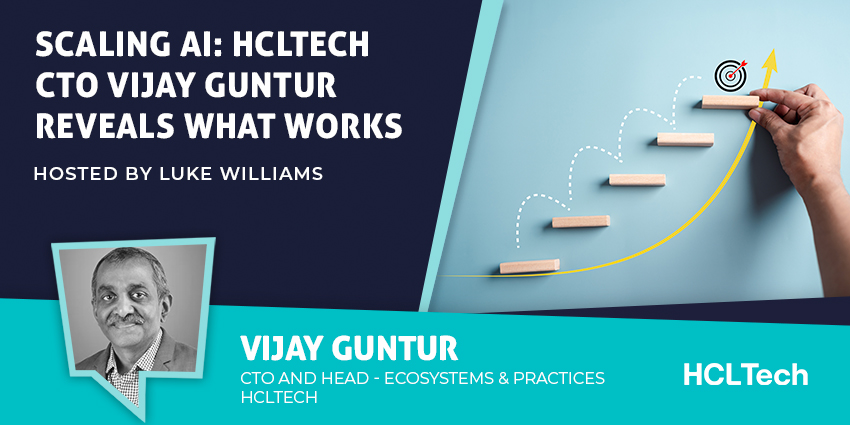What is Artificial Intelligence, how does it work, why does it matter, and where is it headed?
Artificial intelligence (AI) is a technology that empowers machines and computer systems to simulate human intelligence and problem-solving abilities. It can perform tasks on its own (or paired with other technologies like sensors) that would usually require human intelligence.
You’re probably familiar with many examples of AI already, like the digital assistants on your smartphone, GPS guidance systems, and OpenAI’s ChatGPT.
You may also be familiar with AI algorithms and disciplines, such as machine learning, deep learning, and computer vision. These algorithms are modeled to provide AI systems with capabilities based on the functionality of the human brain.
Over the years, AI has gone through countless hype cycles, but the rise of generative AI, in particular, seems to mark a turning point in the industry, introducing intelligent tools that can synthesize all kinds of content and demonstrate an almost human-level of creativity.
Here’s everything you need to know about AI, in all of its forms.
What is Artificial Intelligence? Types of AI
Artificial Intelligence is a broad term that applies to a wide range of different solutions with varying capabilities. Perhaps the most significant two “types” of AI, are weak AI, and strong AI.
Weak AI, or artificial narrow intelligence, refers to any AI system trained to perform specific tasks. These solutions power some significant applications, like Amazon Alexa, self-driving (autonomous) vehicles, and Robotic Process Automation systems.
Strong AI, conversely, is considered the next generation of AI, otherwise known as “artificial general intelligence” (AGI). It’s still a theoretical form of AI at this point, but strong AI would give a machine the ability to show intelligence equal to a human.
This form of AI would essentially have “consciousness” and self-awareness. It could solve problems, plan for the future, and form opinions. If you’re nervous, don’t worry, AGI doesn’t exist today – as far as we know. However, innovators constantly seek ways to test and improve AI systems. You’ve probably already heard of people using the “Turing test” to identify whether an AI system has consciousness.
Diving Deeper: The Types of AI
Search for “What is Artificial Intelligence” on Google, and you’ll likely uncover a lot of information about different types of AI, from generative AI, to conversational AI. However, most industry leaders and analysts break AI down into four main types:
- Reactive machines: These AI tools can perceive the world around them and react accordingly, carrying out specific requests and commands. Think of how the AI tools in your GPS system help to direct you to the right location. They can’t store memory, or learn from past experiences, however, which makes them a little limited in their functionality.
- Limited memory AI: AI systems with limited memory can store previous data to help them make decisions. They look for clues in historical data to “predict” the right next action. For instance, self-driving cars, and ChatGPT are examples of this form of AI. Limited memory AI needs to be constantly trained and fine-tuned to improve its capabilities.
- Theory of Mind: This is one of the forms of AI that doesn’t exist today. The theory is that this kind of AI would be able to understand human emotions and thought processes and use that information to make decisions and predictions.
- Self-aware AI: Again, this type of AI doesn’t yet exist, which most analysts believe is a good thing. However, self-aware AI would have a type of consciousness and an awareness of itself and its thought processes. It would understand its existence in the world, and be able to identify and respond to the emotions of others.
What is Generative AI?
Generative AI is a form of limited memory AI, and one of the most exciting developments in the AI landscape. Gen AI tools are deep-learning models that can take huge amounts of raw data and learn to generate probable outputs when prompted.
These models might seem to have a degree of human consciousness, but they actually just encode training data, and draw from that data to create new responses, similar to the original input. These tools have actually been used for years to analyze numerical data.
However, the rise of new deep learning capabilities has made it possible to create multimodal generative AI solutions that can process and create images, speech, and other data types. Variational Autoencoders (VAEs) are one early example of this form of generative AI.
They opened the door to generative models, making it easier to scale the functionality of solutions like GPT-4, DALL-E, and Google’s Gemini.
The History of Artificial Intelligence: Key Dates
For many of us, Artificial Intelligence still feels like a new or futuristic concept. However, the idea of creating a machine that thinks dates back to Ancient Greece. While the story of AI is constantly evolving, there are a few major dates in history worth noting:
The 1950s
In 1950, Alan Turing published “Computing Machinery and Intelligence”, a paper that asks the question, “Can machines think”. This prompted Turing to become what many refer to as the “father of computer science”, creating the Turing Test, to identify artificial intelligence.
In the Turing test, human interrogators would attempt to distinguish between a human and computer-generated text response to a question. From there, John McCarthy coined the term artificial intelligence in 1956, at the first-ever conference dedicated to AI at Dartmouth College. He also went on to invest the Lisp language. Later in the same year, Herbert Simon, J.C Shaw and Allen Newell, created the first AI software program.
The 1960s to the 1980s
By 1967, Frank Rosenblatt had built the first computer built on a neural network, capable of learning through trial and error, the “Mark 1 Perceptron”. A year later, Seymour Papert, and Marvin Minsky published their book “Perceptrons”, which became a pivotal work on neural networks.
In the 1980s, neural networks using backpropagation algorithms to train themselves started to become commonplace in AI applications, paving the way for the future of machine learning.
The 1990s and 2000s
In 1995, Peter Norvig and Stuart Russell published the paper “Artificial Intelligence: A Modern Approach”, diving into the four potential definitions and goals of AI. Soon after, IBM’s AI solution, “Deep Blue” beat the world chess champion Garry Kasparov in a match.
In 2004, John McCarthy published “What is Artificial Intelligence”, to further explain the workings of AI, and in 2011, IBM Watson beat Brad Rutter and Ken Jennings in a game of jeopardy.
By 2015, Baidu’s Minwa computer was leveraging a deep neural network called a convolutional network, to categorize and identify images with more accuracy than a human being. In 2016, DeepMind’s AlphaGo program out-matched Lee Sodol, the leading Go player in the world. Later, Google bought DeepMind, and began building their own AI ecosystem.
Finally, in 2023, the rise of large language models, or LLMs, like ChatGPT led to a significant change in perceptions of AI model, and the enterprise value it offered.
How Does Artificial Intelligence Work?
If you’re asking, “What is Artificial Intelligence?” you probably also want to know how it works. That can be a difficult question to answer, considering how many different forms of AI we have.
On a broad scale, most AI works by ingesting large amounts of data, analyzing it for patterns, and using those patterns to generate responses. For instance, an AI chatbot uses samples of conversations to simulate conversations with people. Typically, programming AI relies on four things:
- Learning: Acquiring data, and creating rules (algorithms) that allow AI to transform that data into actionable information.
- Reasoning: Giving AI systems the ability to assess algorithms and choose the right process to achieve a specific outcome.
- Self-correction: Empowering AI solutions to continuously learn and fine-tune their responses to improve outcomes.
- Creativity: Using neural networks, statistical methods, and rule-based systems to generate text, music, images, ideas, etc.
What is Artificial Intelligence? Powering AI
All AI systems leverage algorithms and data (typically, huge volumes of data). However, various forms of AI rely on different systems to achieve specific results. The more advanced AI solutions in the world today rely on a range of different processes, some of the most common include:
- Machine learning: Machine learning allows systems to learn from large datasets, identifying patterns and relationships in data. AI tools use statistical techniques to “learn” how to become more effective at a task. Machine learning can include both supervised learning (where human beings label data sets), and unsupervised learning (with the use unlabeled data).
- Neural networks: Neural networks power machine learning. They’re collections of algorithms that process data by simulating the structure of a human brain. Neural networks are made up of layers of “nodes”, or neurons, that process information and pass data around. They can learn to recognize patterns, make predictions based on inputs, and learn from mistakes, making them ideal for recognizing images and translating language.
- Deep learning: Deep learning is a subset of machine learning, which uses deep neural networks. These networks contain lots of hidden layers that data can be processed through, allowing computers to recognize increasingly complex patterns and connections. Deep learning powers speech recognition and natural language processing tools.
- Natural language processing: NLP, or natural language processing allows computers to understand and create spoken and written language. It uses computer science, machine and deep learning, and linguistics to analyze unstructured voice or text data, and draw valuable information from it, enabling human interactions.
- Computer vision: Another type of machine learning, computer vision allows machines to process visual media and extract insights from it. Convolutional neural networks and deep learning break images into pixels and tag them, ensuring computers can differentiate between different shapes and patterns.
Why is AI Important?
So, why does all this matter? Why is AI so important to the human race? The simple answer is that artificial intelligence allows us to interact with machines similarly to how we’d interact with other human beings. It allows machines to simulate human intelligence, solve complex problems, automate tasks, and streamline various processes.
AI can help us make significant strides in everything from healthcare to manufacturing, allowing us to accelerate the development of the human race and the world we live in.
It can even accomplish things that human beings can’t do efficiently. For instance, given enough time and effort, we might be able to figure out a complex math equation, but AI can accurately produce answers to complex questions in seconds.
What is Artificial Intelligence Used For?
Artificial intelligence has applications in various industries, helping to streamline processes, enhance business efficiency, and unlock incredible results. That’s particularly true now we’ve entered the age of generative AI, where creative machines are used for everything from coding to customer service.
Artificial Intelligence in Business
On a broad scale, AI can be integrated into various business functions, to improve efficiency, decision-making, customer experience, and team productivity. Machine learning models power a range of data analytics and customer relationship management (CRM) tools. Virtual assistants and chatbots can also offer 24/7 customer service and coach employees in real-time.
They can also automate various tasks. Robotic Process Automation solutions can adapt to new data and respond dynamically to process changes, automating everything from data entry to security monitoring. Generative AI tools can summarize and transcribe conversations, generate new content (text, images and videos) for sales, marketing, and customer service, and streamline processes.
Artificial Intelligence in Healthcare
AI is currently being applied to many tasks in the healthcare landscape to help develop new treatments, improve patient outcomes, and reduce costs. AI tools in wearables can even track a person’s heart rate and medical conditions in real-time and share insights with doctors. Machine learning models are particularly common in the healthcare industry.
They’re trained on large medical data sets to support healthcare experts in making intelligent diagnoses. For instance, AI can analyze scans and alert neurologists to potential brain conditions or the initial stages of suspected strokes. Plus, AI tools like chatbots can schedule appointments and complete administrative tasks, like requesting insurance information and sharing medical information.
Artificial Intelligence in Education
AI has plenty of amazing applications in the educational landscape. Intell tools can automate tasks like grading, or providing real-time feedback to students based on their performance. AI tutors can offer consistent support to students, helping them to achieve specific learning goals. In today’s world, AI is even being implemented into wearables in extended reality, to help deliver personalized support.
Generative AI also has the potential to help educators craft more engaging teaching materials and resources. However, the rise of these tools has also forced educators to rethink homework testing practices, and revise plagiarism policies, given that AI detection tools can be unreliable.
Artificial Intelligence in Banking and Finance
Financial organizations frequently use AI to improve decision-making. These tools can analyze risk factors for customers requesting loans, suggest credit limits, and even identify investment opportunities. AI and machine learning has also powered the rise of algorithmic trading, transforming financial markets with the ability to execute trades at speed.
Natural language processing tools and chatbots have also transformed the world of consumer finance. Companies use AI tools to authenticate customers and protect their assets using voice biometrics. They also use bots to inform customers about services, handle common transactions, and deliver 24/7 service to customers.
Artificial Intelligence in the Legal Landscape
AI in the legal sector is helping to automate labor-intensive tasks like discovery response and document reviews, allowing paralegals and attorneys to focus more of their attention on creative tasks. Some professionals use AI and machine learning to analyze data for case law, computer vision to extract data from documents, and NLP to interpret requests.
The rise of generative AI has also prompted many legal firms to use large language models to draft common documents, such as boilerplate contracts and disclosure agreements. They also regularly use assistants to help streamline and automate other administrative processes.
Artificial Intelligence in Entertainment and Media
In entertainment and media, AI is used for everything from content recommendations (think Netflix), content distribution, creation, and fraud detection. Generative AI in particular is becoming a common tool for creating marketing collateral, from images to video scripts and blogs.
Even in the journalism landscape, AI can streamline workflows by automating tasks like proofreading and grammar correction. Investigative journalists use AI to find and research stories, searching through large amounts of data with machine learning models to find hidden connections.
Artificial Intelligence in IT and Software Development
In the software development and IT space, AI is used to automate various processes. AIOps technologies enable predictive and proactive maintenance of It environments by analyzing system data and forecasting potential problems before they occur. AI-powered monitoring tools can also flag anomalies in systems based on their data sets.
Generative AI solutions like GitHub Copilot are also helping developers to create code more efficiently, based on natural language prompts. We’re also seeing generative AI emerging in the creation of filters, and content for extended reality applications.
Artificial Intelligence in Security
While AI poses some security risks, artificial intelligence can be a powerful tool in various aspects of the security landscape. Computer vision can help cameras detect potential threats and anomalies in buildings, to improve physical security. AI solutions in cybersecurity can streamline anomaly detection, automate risk mitigation, and detect suspicious activity at incredible speed.
Some AI solutions, like Microsoft’s Copilot for Security teams, can train team members and provide coaching to help them avoid common cybersecurity risks. Plus, AI solutions enable the use of biometric authentication, to enhance security in a range of industries.
Artificial Intelligence in Manufacturing
Artificial Intelligence is everywhere in manufacturing. AI Robotics are particularly common in this industry, allowing companies to create machines that can work autonomously alongside humans. These bots can take on various tasks in warehouses and factory floors, from assembling goods, to packaging, and maintaining quality control measures.
In the automotive landscape, AI is being used to power autonomous vehicles or self-driving cars. AI tools can use radar, GPS, and various machine learning algorithms to navigate roads, and keep drivers safe during journeys.
Artificial Intelligence in Transportation
In addition to the fundamental role AI plays in powering autonomous vehicles, AI can also be used to support a range of processes in the travel space. AI, machine learning, and computer vision tools can help reduce congestion, improve road safety, and manage traffic.
In air travel, AI can predict potential flight delays based on air traffic and weather conditions. In logistics, intelligent tools can enhance efficiency and safety by monitoring vessel conditions and optimizing routes. AI can even help companies build and manage more effective supply chains, with efficient forecasting and predictive capabilities.
The Benefits of Artificial Intelligence
Since AI is such a versatile tool, it can benefit the human race. It’s incredible at automating repetitive tasks, analyzing data, and reducing human error. Some of the most significant benefits of AI in the world today include:
- Enhancing detail-oriented work: AI is fantastic at identifying subtle patterns in data that humans commonly overlook. For instance, it can detect early-stage cancers in the healthcare industry or detect patterns in consumer behavior for retail companies.
- Data processing: AI systems significantly reduce the work of analyzing and processing data. This is useful in a range of sectors, from finance to healthcare, that involves a lot of routine data entry, analysis, and data-driven decision-making.
- Efficiency: AI systems can automate operations while improving safety and efficiency. They can significantly improve team productivity, allowing staff to focus on more creative tasks. They can even perform hazardous tasks to protect workers.
- Consistency and accuracy: Today’s analytical tools use machine learning and AI to process huge amounts of data and constantly adapt to new inputs. They’re excellent at minimizing human error, delivering accurate insights, and preserving consistency in the workplace.
- User experience: AI systems effectively enhance user experiences in various ways. In customer service, they can personalize conversations with customers by drawing on historical data and even suggest recommended products based on their insights.
- Scalability: The right AI tools can scale to handle endless tasks and data. This makes them ideal for scenarios where workloads grow exponentially (like online search). They can also streamline and process various tasks across various industries without limitations.
- Innovation: AI enhances creativity and innovation. It can rapidly simulate and analyze scenarios to help inform companies when choosing materials or strategies for developing new products. AI can also inspire and guide content creators.
- Sustainability: Though powering AI models requires a lot of energy, AI tools can also monitor environmental changes and enhance conservation efforts. Machine learning can even track wildlife risk, endangered species populations, and pollution levels.
The Challenges and Disadvantages of AI
As beneficial as artificial intelligence can be, there are some potential downsides, too. For instance, developing extensive AI models is expensive, time-consuming, and complex. Additionally, there are numerous safety and ethical issues to consider (we’ll return to that shortly). The biggest disadvantages of AI include:
- Expense and complexity: Building AI models requires significant investment in infrastructure, software, and computational resources. For instance, GPT-4 cost more than $100 million to train. Building and managing AI systems also requires a lot of technical expertise, and skill shortages make accessing the right talent complex.
- Ethics and Bias: AI and machine learning algorithms can inadvertently demonstrate bias based on their training data. AI systems can sometimes even amplify subtle biases in training data by coding them into their patterns. For instance, Amazon’s AI-driven recruitment tool accidentally favored male candidates.
- Generalization issues: AI models excel at specific tasks, but they can struggle when they’re asked to address novel scenarios. An NLP model trained on English text might struggle with other languages without extensive training.
- Job displacement: Though many experts agree that AI will create more jobs than it eliminates, it can displace certain human workers. As AI models grow more advanced, they’re replacing the need for certain employees, including people who create content, manage data entry, and more.
- Security vulnerabilities: AI systems, like any technology, are subject to various threats, including data poisoning and adversarial machine learning. Hackers can extract crucial information from AI systems and even use AI for phishing attacks. This is becoming increasingly concerning in the age of generative AI deepfakes.
- Environmental impact: Though AI can assist with boosting sustainability, the data centers and networks required to power these models consume huge amounts of energy. Training AI models can have a significant impact on the planet, and even using these models creates a significant carbon footprint.
What is Artificial Intelligence Regulation?
To address some of the most common concerns surrounding artificial intelligence, regulatory guidance is beginning to emerge. Generative AI, in particular, has prompted a growing focus on “ethical AI” practices. After all, virtually anyone can use an AI system today to replicate a person’s voice, or create a deepfake image, which presents serious privacy and security concerns.
Regulatory guidelines intended to improve the safety of AI are still limited. Many focus on concepts like “explainability and transparency”, requiring developers to be able to outline how their solutions work and make decisions. Additionally, government groups are imposing laws on how AI should be used, and how data should be protected.
The European Union introduced the AI Act in 2023, which aims to ensure all AI systems deployed are environmentally friendly, non-discriminatory, safe, and transparent. In the US, the Biden administration introduced the Executive Order on Safe and Secure AI in 2023, which aims to regulate the use of artificial intelligence in various sectors.
Other countries like China and Brazil are also taking action. However, crafting global laws to regulate AI will be complex. That’s because we’re still answering the question: “What is artificial intelligence?” AI comprises a wide range of technologies used for different purposes, and the solutions available are rapidly evolving, making governance difficult.
Looking to the Future of Artificial Intelligence
The answer to the question: “What is artificial intelligence?” will only continue to evolve in the years ahead. The future of AI holds amazing promise, with the ability to revolutionize industries, solve complicated challenges, and enhance human capabilities.
However, there are threats to consider too, from job displacement to ethical AI and data security. As we increasingly progress beyond weak and narrow AI solutions, striving to create machines that can think and act like humans do, numerous concerns are emerging.
While “sentient” AI might unlock a host of new opportunities and take us to the next level of human evolution, technological singularity could lead to serious risks and moral dilemmas. For instance, will conscious bots be held to the same rules as human beings?







